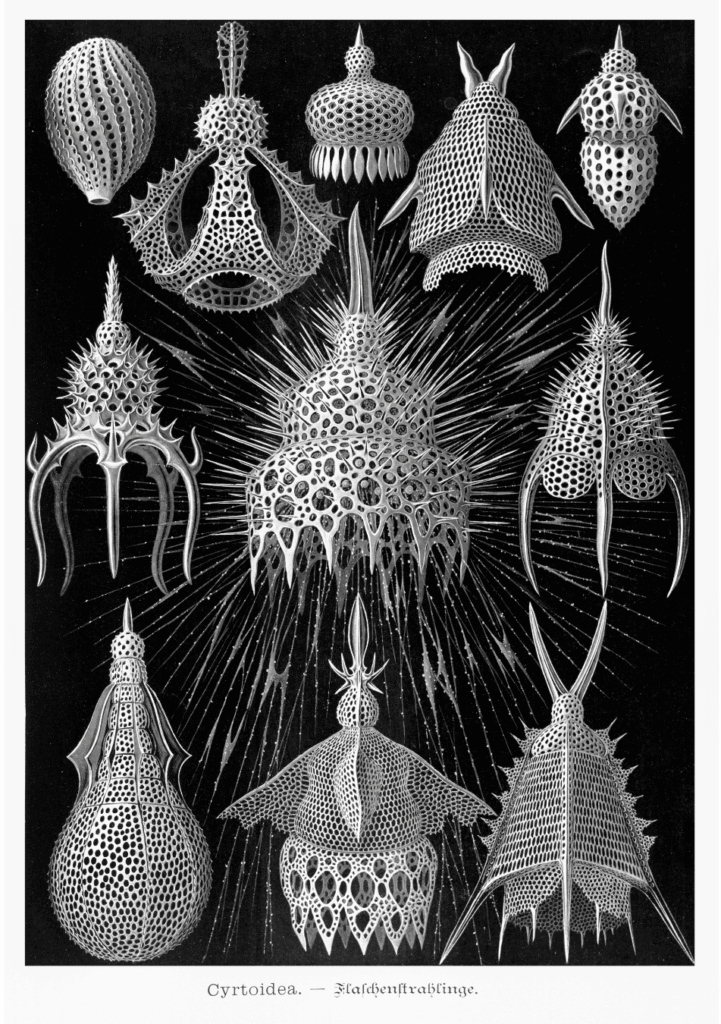Microscopic Marine Life
The theme for the 2026 Science Without Borders® Challenge is “Microscopic Marine Life.” This year, we invite you to create artwork that showcases the incredible world of microscopic marine organisms—tiny life forms that play a vital role in maintaining the health of our ocean and planet. Although invisible to the naked eye, these creatures are essential to ocean ecosystems, the global climate, and even the air we breathe!
To enter the contest, submit artwork that features the positive impact of microscopic marine life, such as phytoplankton, zooplankton, bacteria, protists, and other microscopic ocean organisms. Through your art, you’ll reveal the beauty, diversity, and importance of life at the smallest scale.

What is Microscopic Marine Life?
Microscopic marine organisms are tiny creatures that inhabit the ocean, many of which can only be observed with a microscope. Despite their size, they perform essential roles in ecosystems. These microscopic organisms come in many forms and can be grouped by their role in the food web:
Producers: Make Food Using Sunlight
These organisms use sunlight to perform photosynthesis, creating food for themselves and oxygen for other life.
Phytoplankton – A general term for plant-like plankton, including:
- Diatoms – Single-celled protists with glass-like shells
- Dinoflagellates – Some glow with beautiful bioluminescence, lighting up ocean waters at night
- Cyanobacteria – Bacteria that also do photosynthesis and helped create Earth’s oxygen-rich atmosphere
- Coccolithophores – Covered in chalky calcium carbonate plates that help store carbon in the ocean
- Green algae – Microscopic photosynthetic protists, especially important in coastal ecosystems
Consumers: Eat Other Organisms
These organisms feed on other microscopic life, transferring energy through the food web.
Zooplankton – Tiny drifting animals and animal-like protists, such as:
- Foraminifera – Protists with shell-like coverings that also help scientists study climate change
- Radiolarians – Protists with intricate, glassy skeletons
- Ciliates and other protists – Swim using tiny hair-like structures
- Larval animals – Baby forms of crabs, fish, and jellyfish
Decomposers & Recyclers: Break Down Waste and Cycle Nutrients
These tiny organisms help break down dead material and recycle nutrients back into ecosystems.
- Bacteria – Break down organic matter and play key roles in nutrient cycles like nitrogen and sulfur
- Archaea – Often found in extreme places like hydrothermal vents; some help cycle carbon and other elements
Why Are Microscopic Marine Organisms Important?
Microscopic marine organisms may be small, but they are some of the most powerful life forms on the planet. These tiny creatures have a huge impact on the ocean, the atmosphere, and even human life.
Here’s how:
They Form the Base of Marine Food Webs
Phytoplankton like diatoms, dinoflagellates, cyanobacteria, and other microscopic producers are the first step in the ocean food chain. They are eaten by zooplankton (consumers), which are eaten by small fish, and so on, all the way up to apex predators like sharks, dolphins, and whales. Without these tiny organisms at the bottom, the entire marine food web would collapse, leaving countless species without food.
They Help Us Breathe
Phytoplankton perform photosynthesis, just like plants on land. In the process, they absorb carbon dioxide and release oxygen. In fact, scientists estimate that phytoplankton produce at least 50% of the oxygen in Earth’s atmosphere—that’s every second breath we take! These microscopic organisms are planetary oxygen generators.
They Recycle Nutrients
Some microscopic organisms, like bacteria and archaea, are decomposers—they break down dead plants, animals, and waste. When they do this, they release nutrients like nitrogen, phosphorus, and carbon back into the water. Other organisms, such as foraminifera, contribute to ocean sediments by leaving behind their calcium carbonate shells, which help form marine limestone and store carbon over time.
These nutrients are then reused by other marine life, such as phytoplankton, helping to keep ocean ecosystems healthy and productive. Without these tiny decomposers, the ocean food web would fall apart.
They Power Earth’s Natural Cycles
In addition to recycling nutrients, microscopic marine life plays a big role in Earth’s biogeochemical cycles—the systems that move important elements through the ocean, land, air, and living things.
Microbes help:
- Move carbon through the ocean and remove carbon dioxide from the air
- Transform nitrogen into forms that marine plants can use
- Break down and recycle phosphorus and sulfur
- Release trace metals like iron, which plankton need to grow
- Recycle silicon, used by diatoms to build their glassy shells
These cycles help support ocean life, mitigate climate change, and maintain Earth’s balance.
They Help Regulate the Climate and Fight Climate Change
Phytoplankton like diatoms absorb carbon dioxide (CO₂), a greenhouse gas, from the atmosphere during photosynthesis. This not only helps them grow, but also removes CO₂ from the air, which helps cool the planet.
When they and shell-forming organisms like foraminifera and coccolithophores die, some sink to the deep ocean, carrying carbon with them. This process, known as the biological carbon pump, stores carbon for hundreds or even thousands of years. Certain bacteria and archaea also help by breaking down organic carbon in ways that keep it buried in ocean sediments.
By trapping and storing carbon, microscopic marine life plays a powerful role in slowing down climate change and keeping Earth’s climate more stable.
They Are Indicators of Environmental Change
Organisms such as foraminifera, diatoms, and dinoflagellates respond quickly to changes in temperature, nutrients, and pollution, making them excellent bioindicators of ocean health. Scientists study changes in plankton communities to learn about climate change, ocean acidification, water pollution, and stress on coral reefs. These organisms help us track what’s happening in the ocean before it’s visible to the naked eye.
In Summary
Without microscopic marine organisms, the ocean food web would break down, the air we breathe would be reduced, climate change would accelerate, and scientists would lose a valuable tool for monitoring Earth’s health. These tiny life forms are truly the unsung heroes of our planet.
Where Do Microscopic Marine Organisms Live?
Microscopic marine life inhabits all areas of the ocean, from the sunlit surface waters to the deep sea, and even in extreme environments such as hydrothermal vents and polar ice. Phytoplankton, such as diatoms and dinoflagellates, float near the surface, using sunlight to produce food through photosynthesis. Zooplankton, like tiny shrimp-like copepods, drift with the currents and feed on phytoplankton or smaller microbes. On the seafloor, organisms like foraminifera and radiolarians build intricate shells, which help form marine sediments over time.
Some bacteria and archaea live in extreme environments, such as deep-sea hydrothermal vents, where they obtain energy from chemicals rather than sunlight, a process called chemosynthesis. Others form mats on seagrass roots or live inside sponge tissues, helping their hosts get nutrients. Even coral reefs depend on microscopic algae called zooxanthellae, which live inside coral animals and help them grow. From icy waters to tropical reefs, microscopic marine organisms are everywhere, playing vital roles in every part of the ocean ecosystem.
Educational Resources
There are many activities available on marine microorganisms. Here are a few resources that can assist in teaching these topics.
Khaled bin Sultan Living Oceans Foundation Education Portal
Our Coral Reef Ecology Curriculum offers an engaging way to explore educational concepts. It covers topics such as marine food webs, plankton, photosynthesis, and symbiosis, making it a valuable resource for learning about microscopic marine organisms and their vital role in ocean ecosystems.
COMING SOON!
We’re developing a brand-new curriculum: Little Creatures with a Big Message, designed to connect students with science and mathematics. These lessons focus on foraminifera, microscopic marine organisms that help scientists understand the health of coral reefs, both past and present. Through hands-on, real-world activities, students will discover how these tiny, shelled creatures can reveal big changes in the ocean and inspire meaningful environmental action. This upcoming resource will be a perfect companion to the Science Without Borders® Challenge theme, Microscopic Marine Life.
Smithsonian Ocean Portal
Explore articles, videos, and lesson plans about plankton, marine microbes, and their role in the ocean food web.
NOAA Ocean Explorer
Classroom-ready modules, ocean zones, bioluminescence, deep-sea microbes
NOAA offers dozens of educator-ready lesson plans, interactives, and multimedia resources focused on marine microbes, deep-sea exploration, chemosynthesis, and ocean health. Search by topic or grade level.
Shape of Life
This lesson plan and video series introduce students to the amazing variety of plankton and their critical role in ocean ecosystems. The materials include engaging videos, lesson plans, a PowerPoint, and hands-on activities.
PBS Learning Media
PBS LearningMedia offers a wide variety of free, classroom-ready videos, lesson plans, and activities focused on ocean science, including plankton, marine food webs and ecosystems, photosynthesis, and biogeochemical cycles.
Identification Guides and Species Repositories
Ocean Literacy Principles
Ocean Literacy Principles Related to Microscopic Marine Life
1. The Earth has one big ocean with many features.
Microscopic marine organisms live throughout the ocean—from sunlit surface waters to deep, dark trenches and even inside other marine animals. Their tiny presence connects many parts of the ocean and helps shape its physical and chemical characteristics.
2. The ocean and life in the ocean shape the features of the Earth.
Foraminifera and other tiny, shelled organisms build up sediments on the seafloor that form rocks and islands over millions of years. These microscopic builders help shape Earth’s coastlines and underwater landscapes.
3. The ocean is a major influence on weather and climate.
Photosynthetic microorganisms like phytoplankton absorb carbon dioxide and release oxygen, playing a huge role in regulating Earth’s climate. Their activity influences global weather patterns and the health of all living things.
5. The ocean supports a great diversity of life and ecosystems.
Microscopic marine life includes producers, consumers, and decomposers—all essential to ocean ecosystems. These tiny organisms form the foundation of the food web and support larger animals, such as fish, whales, and seabirds.
6. The ocean and humans are interconnected.
Microscopic marine organisms produce much of the oxygen we breathe and help remove carbon dioxide from the atmosphere. Studying these organisms also helps scientists monitor ocean health and predict changes that affect human life.
7. The ocean is largely unexplored.
Many microscopic marine organisms remain undiscovered or are little understood. Ongoing research, like studies on foraminifera as bioindicators, reveals new insights about ocean health and environmental change.

